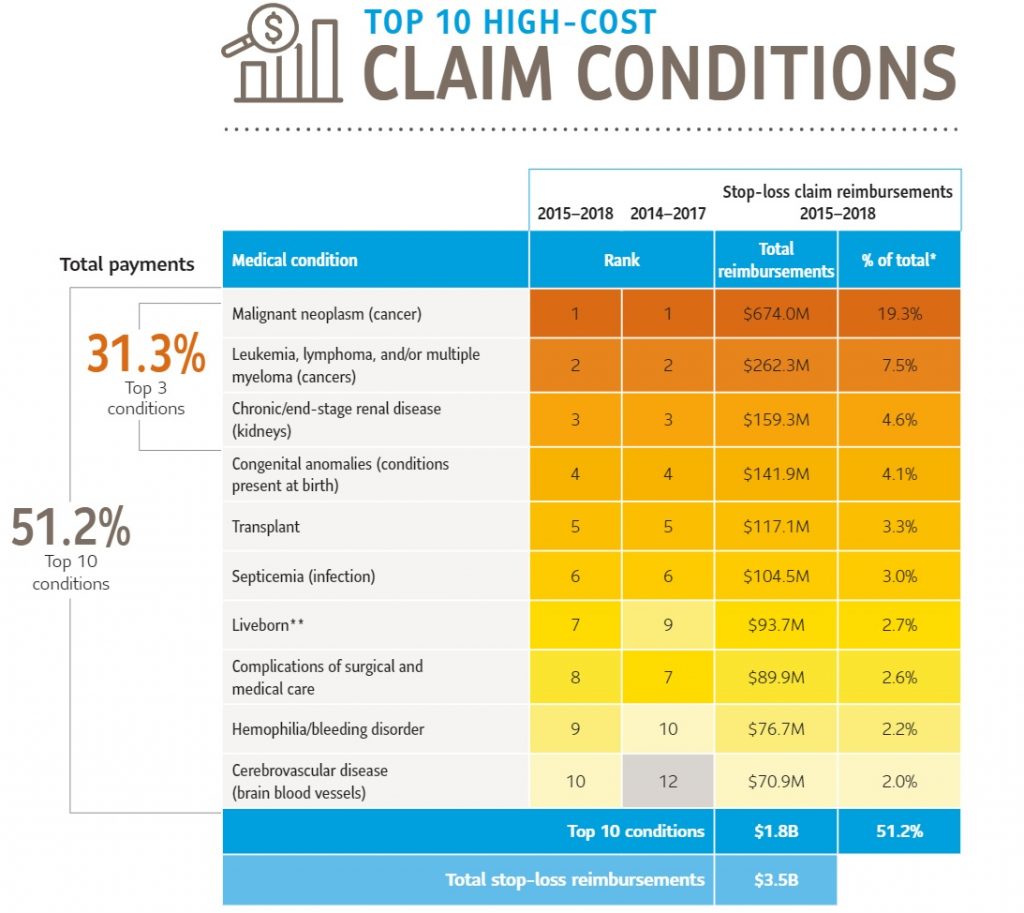 Emerging therapies for cancer not only promise greater survival rates, but also potentially less costs as they require far less time to do their job, according to the report. (Photo: Shutterstock)
Emerging therapies for cancer not only promise greater survival rates, but also potentially less costs as they require far less time to do their job, according to the report. (Photo: Shutterstock)
Considering that more than a third of Americans will be diagnosed with cancer at some point in their lifetime, and injectable drugs for cancer are among the most expensive partly due to lengthy treatments, it's no surprise that cancer continues to be the costliest stop-loss claim for self-insured employers, according to the 2019 Sun Life Stop-Loss Research Report: High-cost claims and injectable drug trends.
But there's good news: emerging therapies for cancer not only promise greater survival rates, but also potentially less costs as they require far less time to do their job, according to the report.
Related: Genetic testing, precision medicine and benefits design
“Focus has been placed on targeted therapies, which aim to go after the cancer cells more directly, while doing less damage to healthy cells, and on immunotherapy, which uses the body's immune system to fight off the cancerous cells,” the authors write. “In each of these treatment areas, several new drugs are being explored that may work for specific variations of the disease.”
But not all emerging therapies that do their job quickly will result in lower claims costs, according to the report. Case in point: gene therapy in the form of a new drug, Zolgensma, from Novartis that was recently approved as a cure for spinal muscular atrophy with just one dose, is set to cost $2.125 million per patient.
 Source: Sun LIfe
Source: Sun LIfeIn 2018, the high cost of treating cancer was due to not only to the length of treatment, but also because of the high price of many injectable drugs. Indeed, within the top 20 highest-cost injectable drugs, 71 percent of the cost is related to medications used to treat cancer. This includes all top five high-cost injectable drugs — Herceptin, Neulasta, Perjeta, Avastin, and Keytruda — and eight of the top 10.
Cancer continues to top the list as both the No. 1 and No. 2 highest-cost claim condition, accounting for 26.8 percent of the total reimbursements for Sun Life stop-loss policyholders in the U.S. with 50 or more employees.
“Breast cancer was the most common type of cancer and also had the highest overall spend, while lymphocytic leukemia was the cancer condition with the highest average cost,” the authors write.
Chronic/end-stage renal disease continued to be the third highest-cost claim condition. Overall, specialty drugs, extended hospital stays and complex treatments are major cost drivers in million-dollar-plus claims.
Other key findings from the report include:
- The number of members with claims totaling more than $3 million doubled from 2017 to 2018. A primary driver of these large claims was prolonged hospital stays.
- In 2018, the largest claim was $7.5 million. The largest claim for a single injectable drug was $1.8 million.
- In a single policy year, 85 percent of employers were reimbursed for a stop-loss claim.
- Two-thirds (64 percent) of million-dollar-plus patients were under 40 years of age.
Read more:
© 2025 ALM Global, LLC, All Rights Reserved. Request academic re-use from www.copyright.com. All other uses, submit a request to [email protected]. For more information visit Asset & Logo Licensing.








